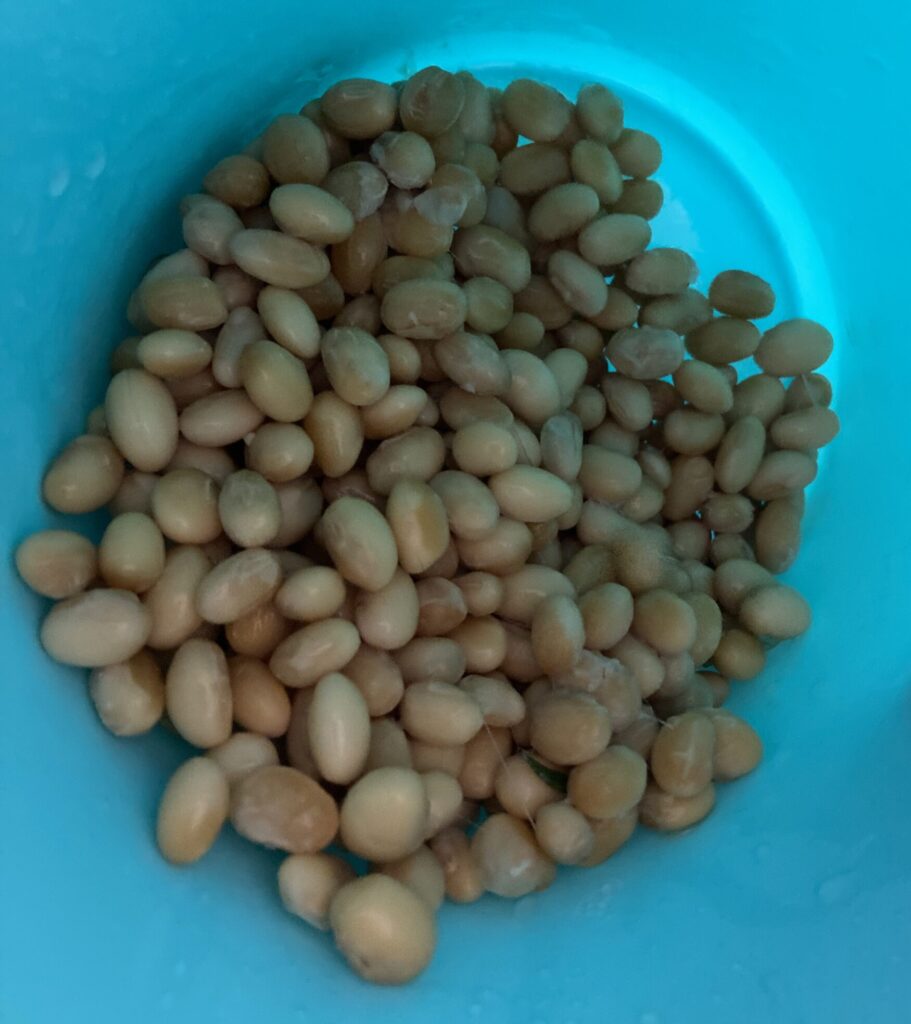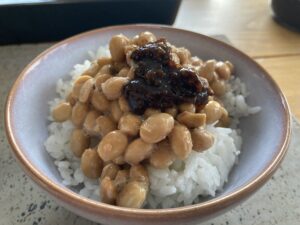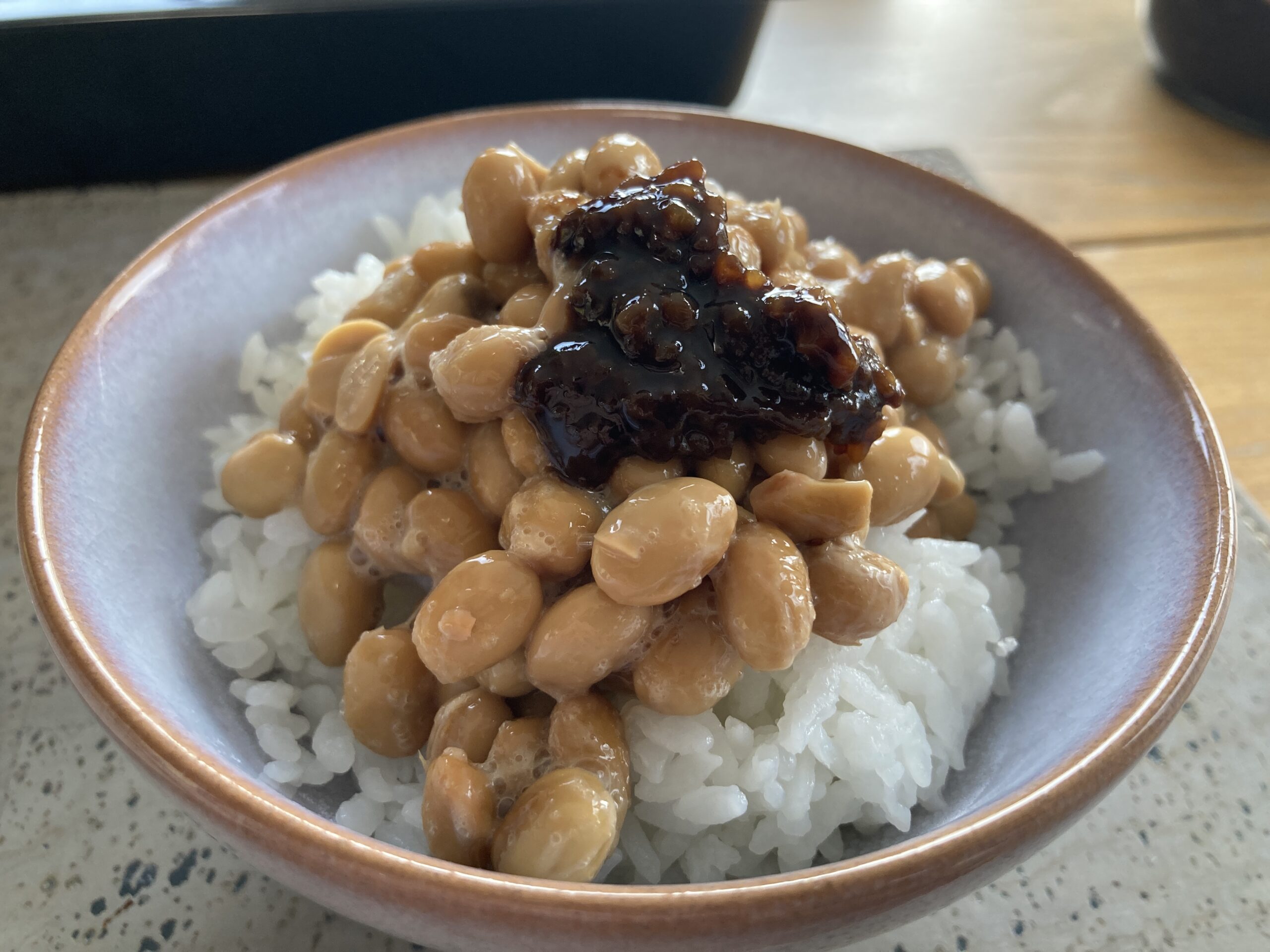If you’ve ever lived abroad, you’ll know the feeling—craving a food that simply doesn’t exist where you are. For me, that food was natto, the uniquely sticky and pungent fermented soybean dish that’s a breakfast staple in Japan. It’s packed with probiotics, protein, and… controversy. Many non-Japanese people find it strange, but I love it.
In Scotland, finding natto is like finding gold—and it’s priced about the same (nah, just joking). That’s when I thought: Could I make it myself? I didn’t like the taste of frozen natto (I never saw fresh ones in Scotland), and was literally dying for nice, fresh pack of natto.
I did some research myself, and found out many Japanese outside of Japan tend to think the same, and crave for natto. Thank you fellow bloggers!
Experiment #1: Harnessing the Power of Rosemary
I had read somewhere that Bacillus subtilis, the bacteria responsible for fermenting soybeans into natto, naturally lives everywhere, like rosemary leaves. It sounded like magic—fermentation from the wild!
Thanks to ASDA, my closest supermarket, they had fresh rosemary and it wasn’t that expensive.
So I steamed some soybeans (perhaps not long enough, I’d later realize), placed them in a clean container with sprigs of rosemary, and incubated the mixture in a yogurt maker at around 40°C (104°F).
It was harder to find dried soybeans than fresh rosemary. I found them in organic grocery store.
After 24 hours, the result was… ambiguous.
There was a slight stickiness, but nothing like the webby, stringy texture of proper natto. The smell was mild (not too natty-smell, but little hint of rosemary), the taste flat. In short—it wasn’t a success, but it wasn’t a total failure either.

Unexpected Discovery: Sticky Yogurt?
The real surprise came days later when I used the same yogurt maker to multiply a batch of yogurt.
When I opened the container, I noticed a faint stringiness—yes, even the yogurt had been touched by the resilient Bacillus subtilis. I couldn’t believe it. The bacteria had clearly made itself at home, showing just how tenacious and adaptable these microorganisms can be.
Even though my rosemary-natto wasn’t delicious, it was an exciting glimpse into the invisible world of microbes and how easily they travel and survive. My yogurt tasted fine, by the way.
Experiment #2: Frozen Natto Starter — A Reliable Method
Still determined, I moved on to a more reliable method. I found some packet of frozen natto at an Asian grocery store in Edinburgh and decided to use it as a starter culture.
This time, I made sure to steam the soybeans thoroughly—soft enough to mash between my fingers. It took quite a while, and I think this was the most tough part of the process.
I then added one pack of thawed natto (I know this was way beyond minimum requirement, but I didn’t want to be stingy and fail) to the warm beans, mixed well, and let them ferment for 24 hours in the yogurt maker. I read it’s important to mix while the steamed beans are hot, so that unwanted microorganisms will die from the heat.
This batch was a real success!!
The beans developed a nice stringy texture, the aroma was pleasantly nutty and funky, and the taste was just right. I finally had homemade natto, and it felt like a tiny culinary miracle.
It went so well with my shoyu koji. Read my post on shoyu Koji, too!

Is Infinite Natto Possible?
In theory, I think so.
You can keep a spoonful of your last batch and use it to start the next one—like a sourdough starter for natto. I only tried this once, but the idea of growing a never-ending natto supply is very appealing (especially with import prices being so high abroad!).
Reflections: Why Make Your Own Natto?
- It’s a fun, hands-on science project
- You learn a lot about fermentation and bacteria
- It’s deeply satisfying to make something so uniquely Japanese in a completely foreign land
- It saves money and lets you control the ingredients
Making natto isn’t just about saving money or replicating a taste of home—it’s about connecting with tradition and experimenting with nature’s processes in your own kitchen. There’s something magical about transforming plain soybeans into a living, sticky food with such a long history and health benefits. I’m not too picky about additives, but I can tell you, it came out additive-free!
Would I Do It Again?
Absolutely!
Next time I might try adjusting fermentation time, experimenting with different starter, or even attempting a hybrid natto using different starter cultures. It’s an open-ended journey that’s as much about learning as it is about eating. You don’t even have to stick to soy beans, you can try with some other beans! It’s just that our Japanese ancestors found soy beans to be the best in their knowledge, but it might be just old tradition of the past.
If you’re living abroad and missing natto, or just curious about fermentation, I highly recommend giving it a try. You might not get it perfect on the first go, but the journey is so much fun.


